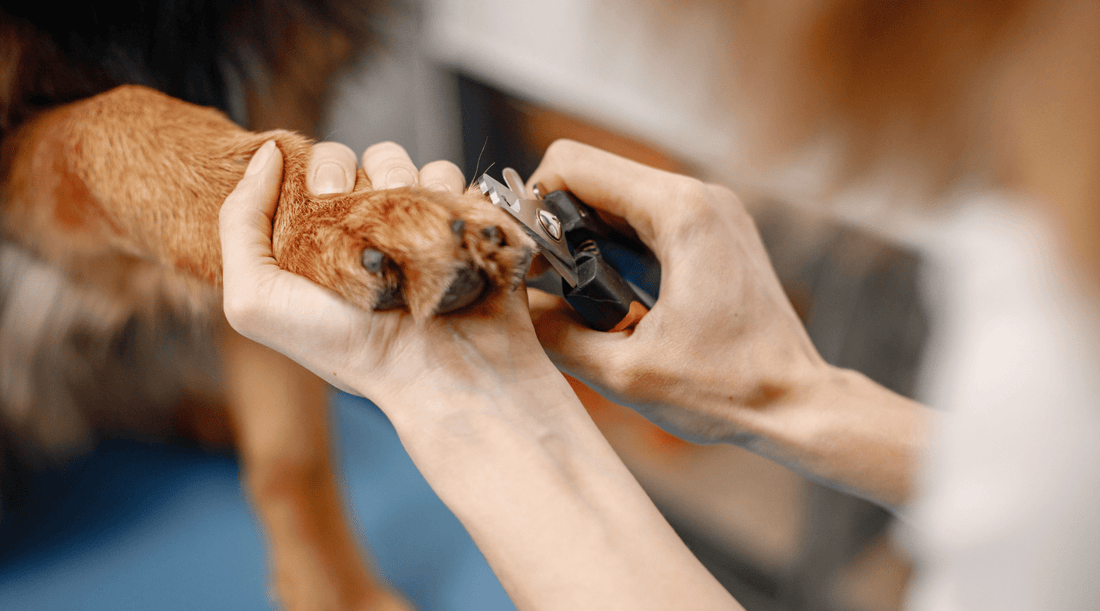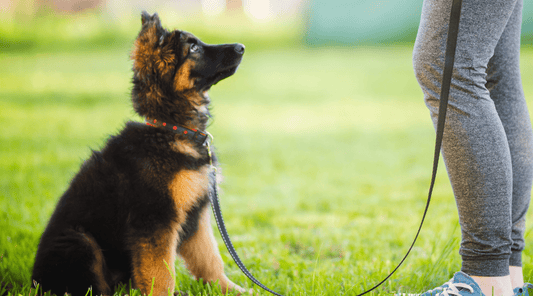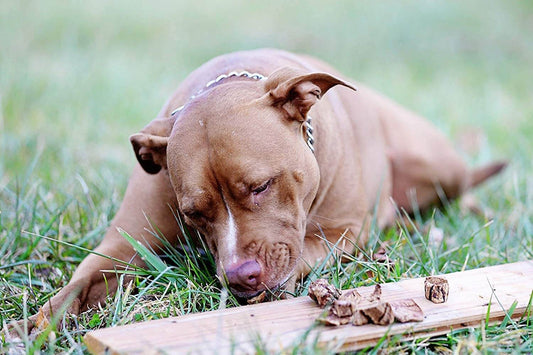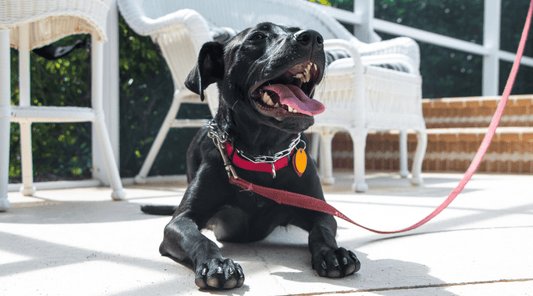
How to Trim Your Dogs Nails: A Guide to Happy, Healthy Paws
Dawn Miller Feb 18, 20256 Minute ReadLearning how to trim your dog's nails is one of those things in life that seems so easy until you pull out the trimmers and start trying to tame your wiggly bundle of joy. They don't understand why you're so intent on tickling their paws.
With all due respect to the fantastic work dog groomers do, I'm here to tell you that you can learn to trim your dog's nails at home. Save that money and treat your dog to a meaty dog bone instead.
Last Saturday, as I walked my dogs on the sidewalk on a cold afternoon, the clicking of nails on the sidewalk behind me announced a fellow dog-walking neighbor approaching. I turned to greet Katy with her oversized tank of a dog, Roger, who sounded a bit like a tap dancer preparing for a show.
"His nails grow so fast." She exclaimed. "And he's too big for me to handle."
I understood completely. I love over-sized dogs like Roger. But learning how to give them a paw-cure takes some practice.
Why Regular Nail Trimming Matters
Keeping a dog's nails at an appropriate length is standard dog care. When nails become overgrown, dogs it impacts their health in many ways:
- Discomfort and pain, affecting your dog's ability to walk
- Scratching injuries
- Posture and mobility issues, which can lead to bone and joint problems, especially in big dogs like Roger
- Paw injury risk as long nails can snag and break, leading to painful infections
- Ingrown nails when they get really long and curve inward.
Dogs with unruly nails may also injure their humans, furniture, carpet, and delicate wood floors. This is definitely something you'll want to stay on top of.
How Do Wild Dogs Keep Their Nails Trimmed
Now, if you're like me—and I think you are—you might wonder why this isn't a problem for wild dogs and wolves who don't have humans around to care for them. My dogs' ancestral wolves walked a lot more than the modern dog, across uneven terrain—pebbles, various types of dirt, rock, and roots.
Like a good nail file, these varied surfaces keep these dogs' nails from becoming overgrown. So, no, we don't need to start a charity to go out and trim wild canines nails. They're good!
Your dog on the other hand may need help. So, here's what to do.
What Dog Trimming Tools Do You Need?
- Best Dog Nail Trimmers - Invest in high-quality trimmers suitable for your dog's size and nail thickness. There are scissor-style and guillotine-style trimmers; choose the one you're most comfortable with.
- Styptic Powder - This helps stop bleeding in case you accidentally cut the quick. This one on Amazon also contains benzoncaine to ease pain. You don't need much of this.
- Treats - Have some of your dog's favorite treats on hand to reward them and make the experience positive.
How to Trim Your Dogs Nails
1. Choose a Calm Environment
Select a quiet, well-lit area where both you and your dog feel relaxed.
2. Get Your Dog Comfortable with Paw Touch
This is a critical step many pet parents skip. Ignoring this leads to a lot of discomfort for you and your dog.
Paws are very sensitive. And dogs are naturally protective of this critical part of their body. They may squirm and even snap at you because "what the heck are you doing?".
Start by gently handling your dog's paws regularly to get them accustomed to the sensation. This can make the nail-trimming process less stressful—and a lot less weird.
Take this opportunity to reward them with a treat when they stay calm and let you handle their paws. You're positively reinforcing the calm and cooperative behavior that will allow you to cut nails.
3. Decide How You'll Hold Your Dog, and Do a Dry Run
To maintain control you may need to wrap your arm around your dog's back with your hand toward their belly. This will allow you to lift a small or medium dog up to access the paws one at a time.
If you have a larger dog like my lab mix, Bruno or Katy's mastiff, Roger, then you'll probably only be able to get your arm over their neck.
This will allow you to gently control the head. Place your other arm under their body, like a hug. Adjust your positioning as needed to reach the front or hind paws.
Never force it. The position should be comfortable for both you and your dog the whole time. Now that you've got an idea of how you'll hold them, practice without trimming.
Hold them like this for several seconds and then switch to a different paw. Go through all the paws, Not only are you increasing their comfort; you're becoming more confident in working with their paws.
Give them a treat when they stay calm and manageable.
If they try to get away, use a basic command like "stay". Then reward them with praise and a treat when they stay.
To learn more about how basic commands enhance your relationship with your dog and make caring for them easier, I encourage you to sign up for the Free 7-Day Dog Training Challenge.
4. Identify the Quick
The quick is the sensitive part of the nail that contains blood vessels and nerves. In dogs with light-colored nails, the quick appears as a pink area.
For dark nails it's harder to see. Trim small amounts gradually to avoid cutting the quick. And once you find it, make note of where it is. You might even ask a friend or partner to help you take a picture for future reference.
Amanda breaks it down a bit in this video:
5. Trim the Nails
Hold the paw gently but firmly. Trim the nail at a 45-degree angle, taking off small bits at a time. Ensure the cut edge is parallel to the floor.
6. Stay Calm and Patient
If you're unsure or your dog becomes anxious, it's okay to trim just a few nails at a time. Always end on a positive note with praise and dog treats. This way they start to look forward to trimming.
Dog Nail Trimming Tips
- Get on a Schedule - Trim your dog's nails every 3-4 weeks to prevent overgrowth. It will also be 10 times easier each time when you do it regularly.
- Know It Gets Easier - For some dogs, this can be done in as few as 3 minutes with some practice.
- Use Proper Tools - Sharp tools intended for this purpose can make short work of dog nail trimming while ensuring safety.
- Get Professional Help When Needed - The dog beauticians at the dog spa in my neighborhood do amazing work. Please support local businesses. If you're struggling with overgrown nails or can't keep up, please speak with your vet or a dog grooming professional.
How Long-Lasting Dog Bones Support Nail Health
Marrow-filled dog bones contain collagen, calcium, phosphorus, vitamin E, and other key nutrients for healthy skin, coat, and nails. When nails are healthy, it's easier to get clean cuts without chipping and splintering.
Dog bones can also ease dog anxiety so your dog is more calm and responsive.
So, give your dog a long lasting bone before or after nail trim sessions to make nails so much easier.
Available On:





